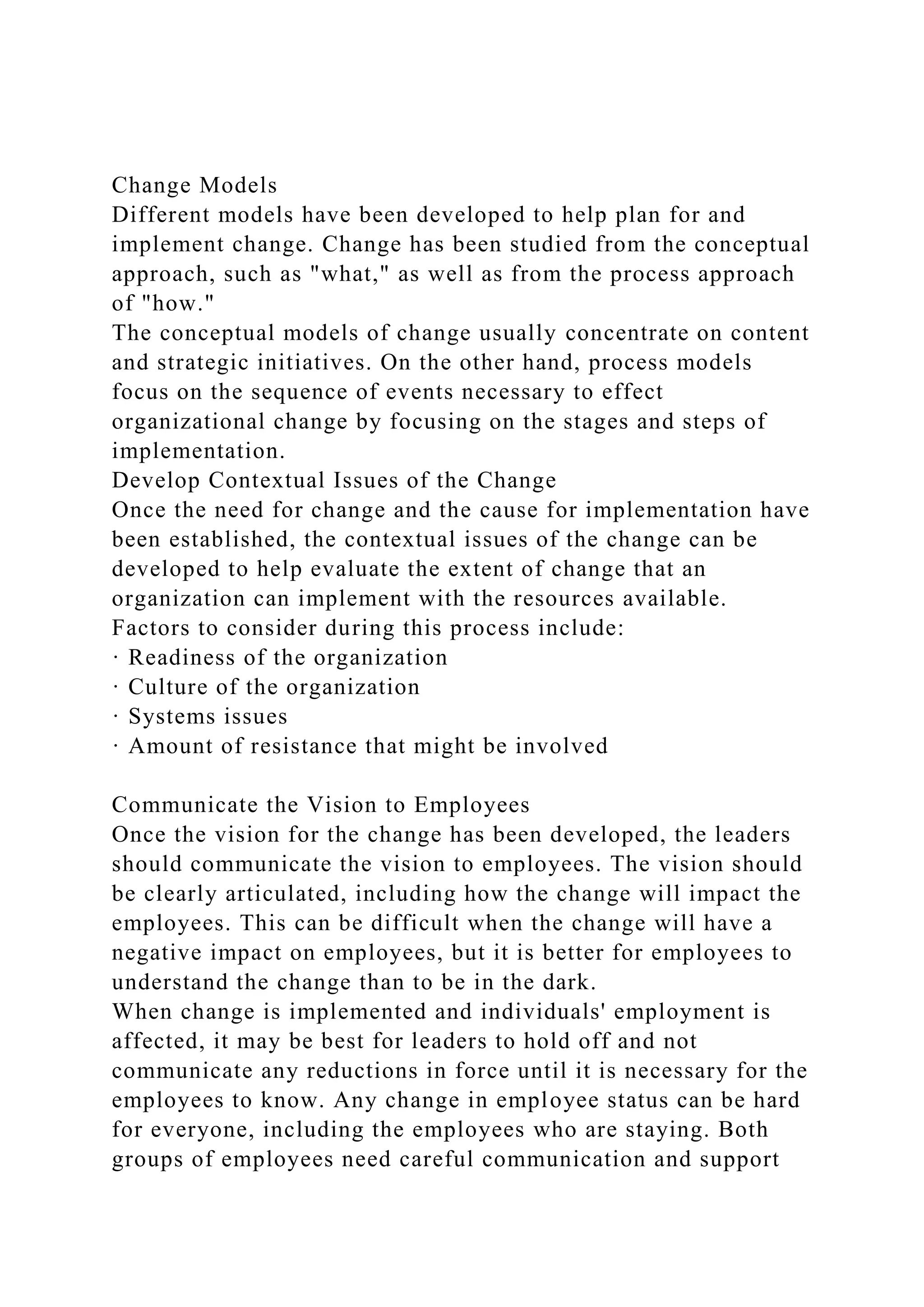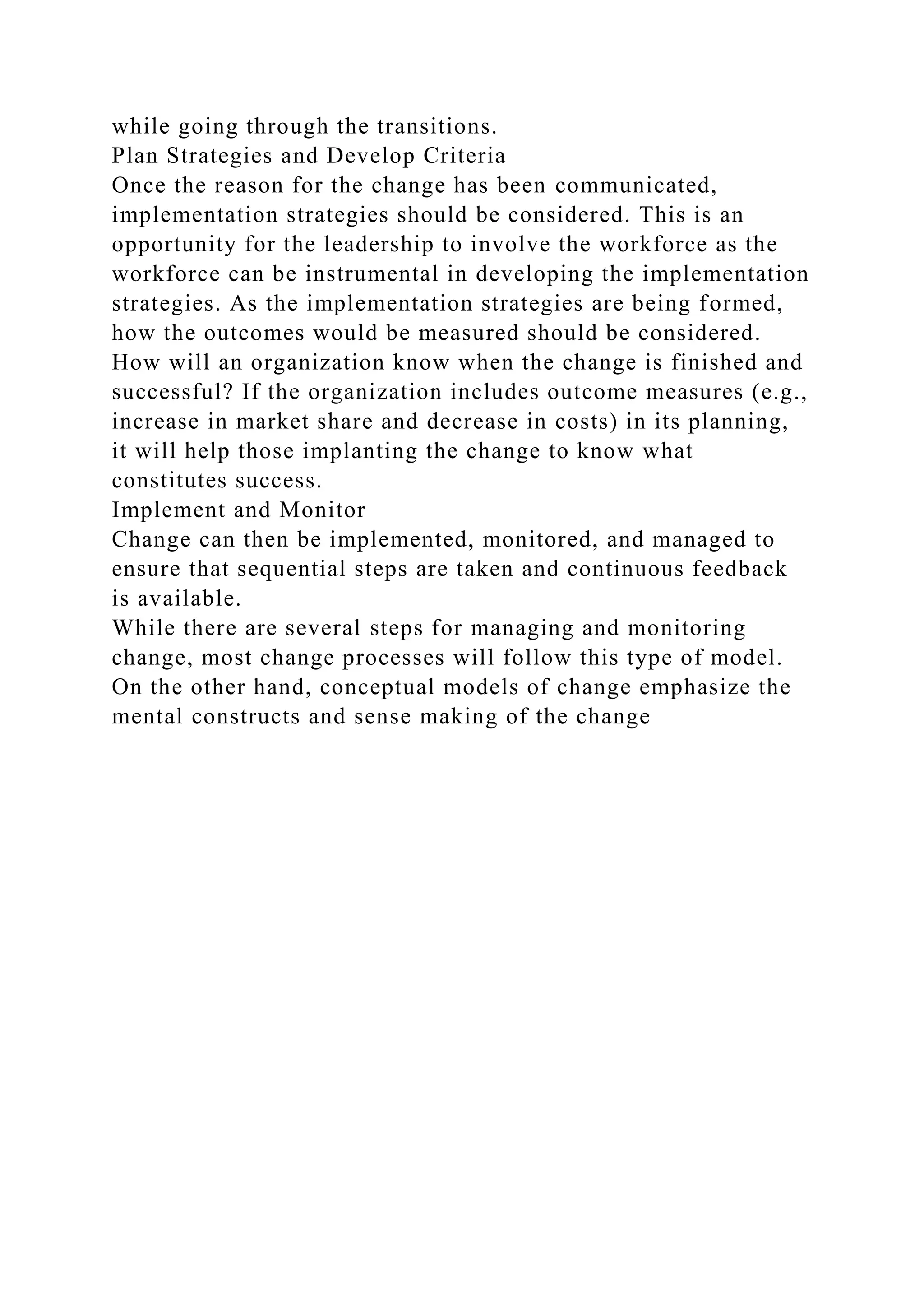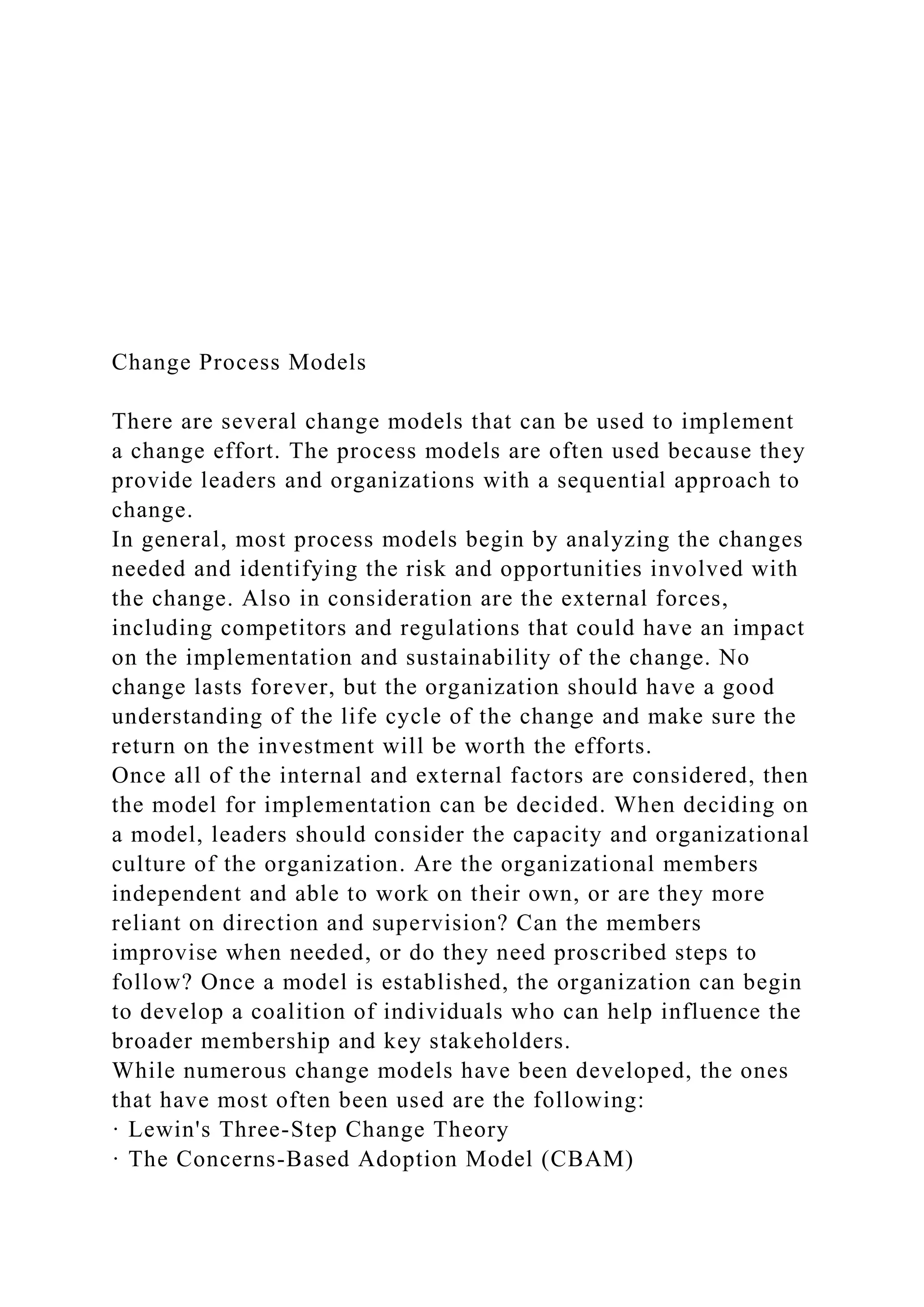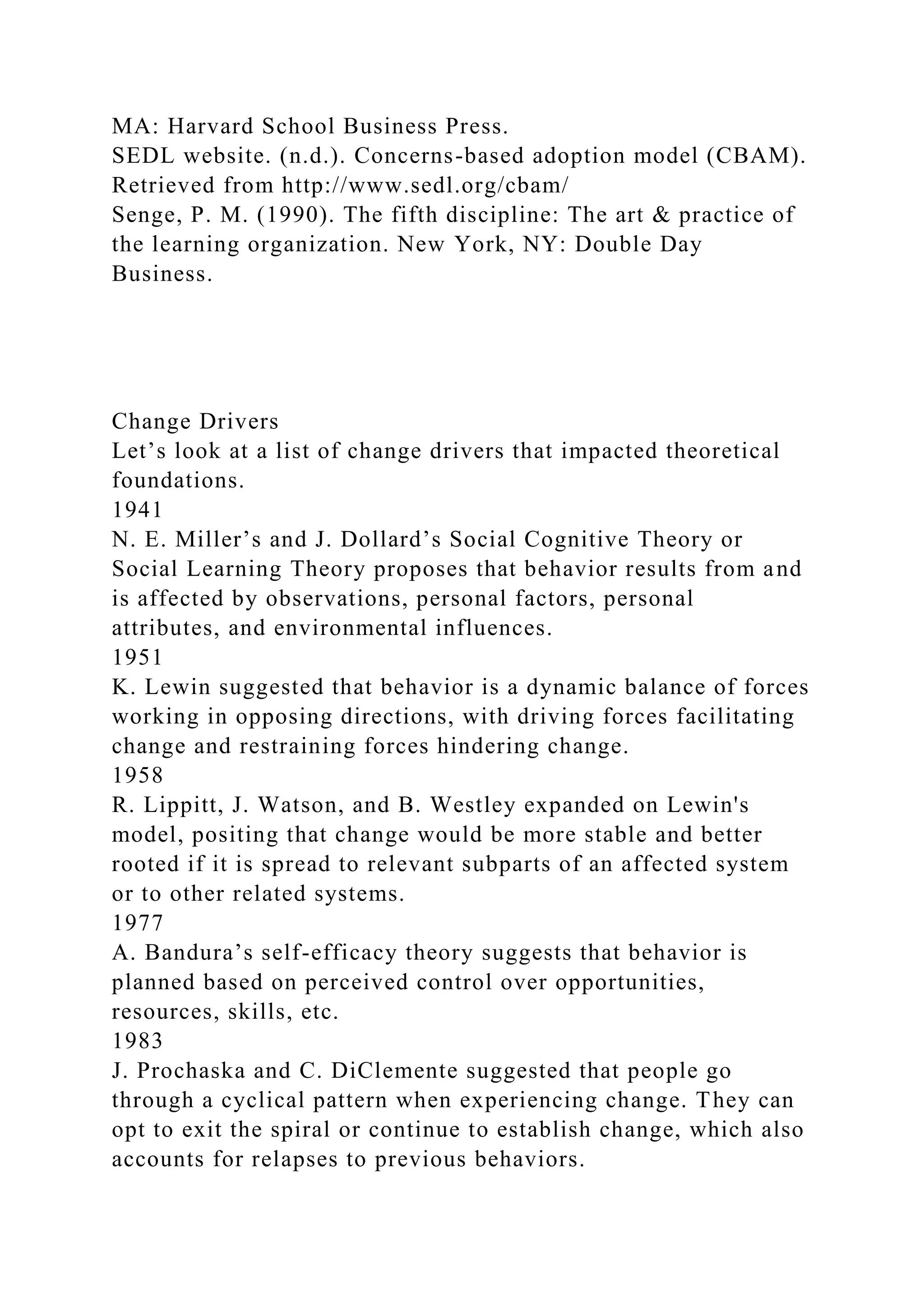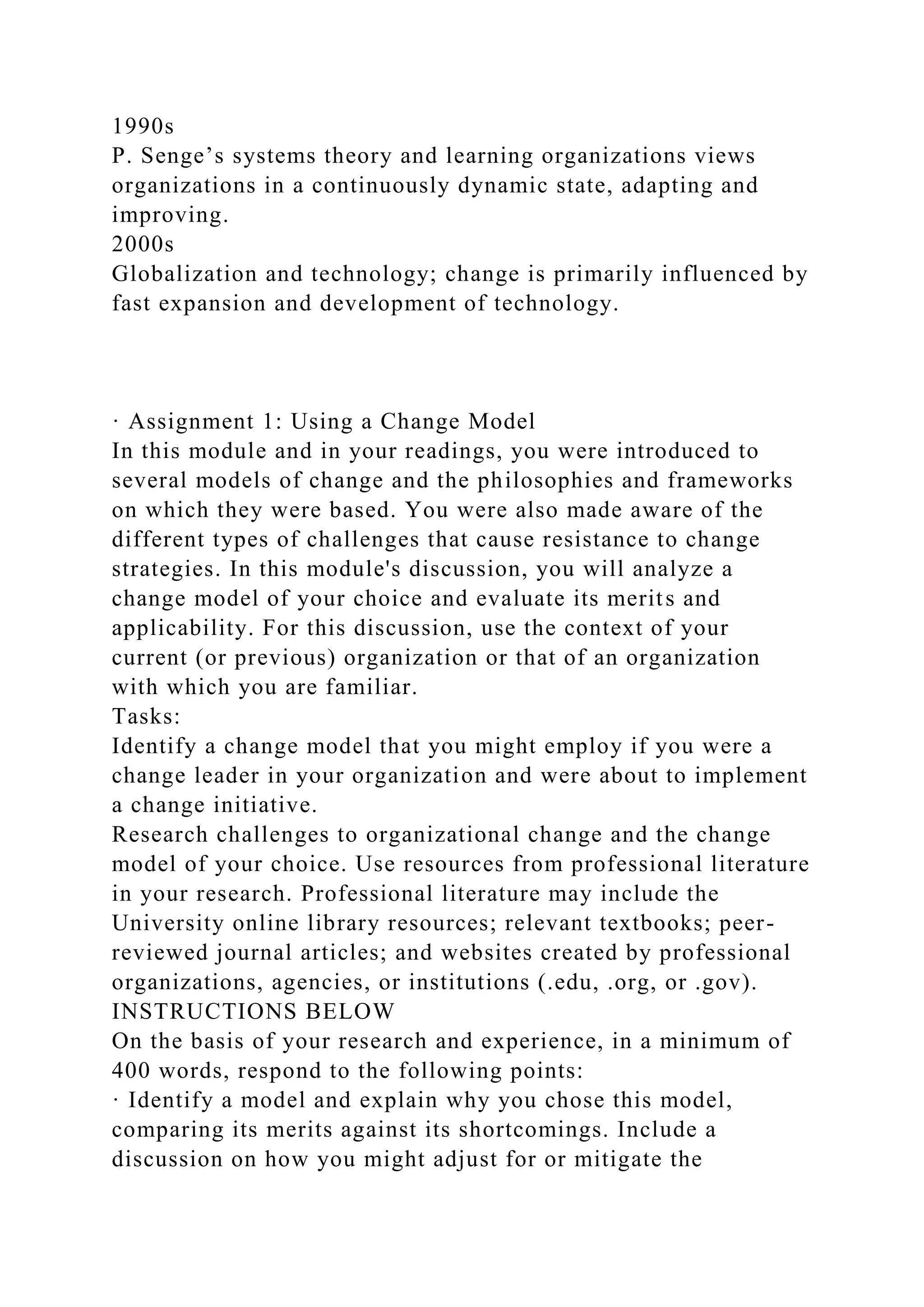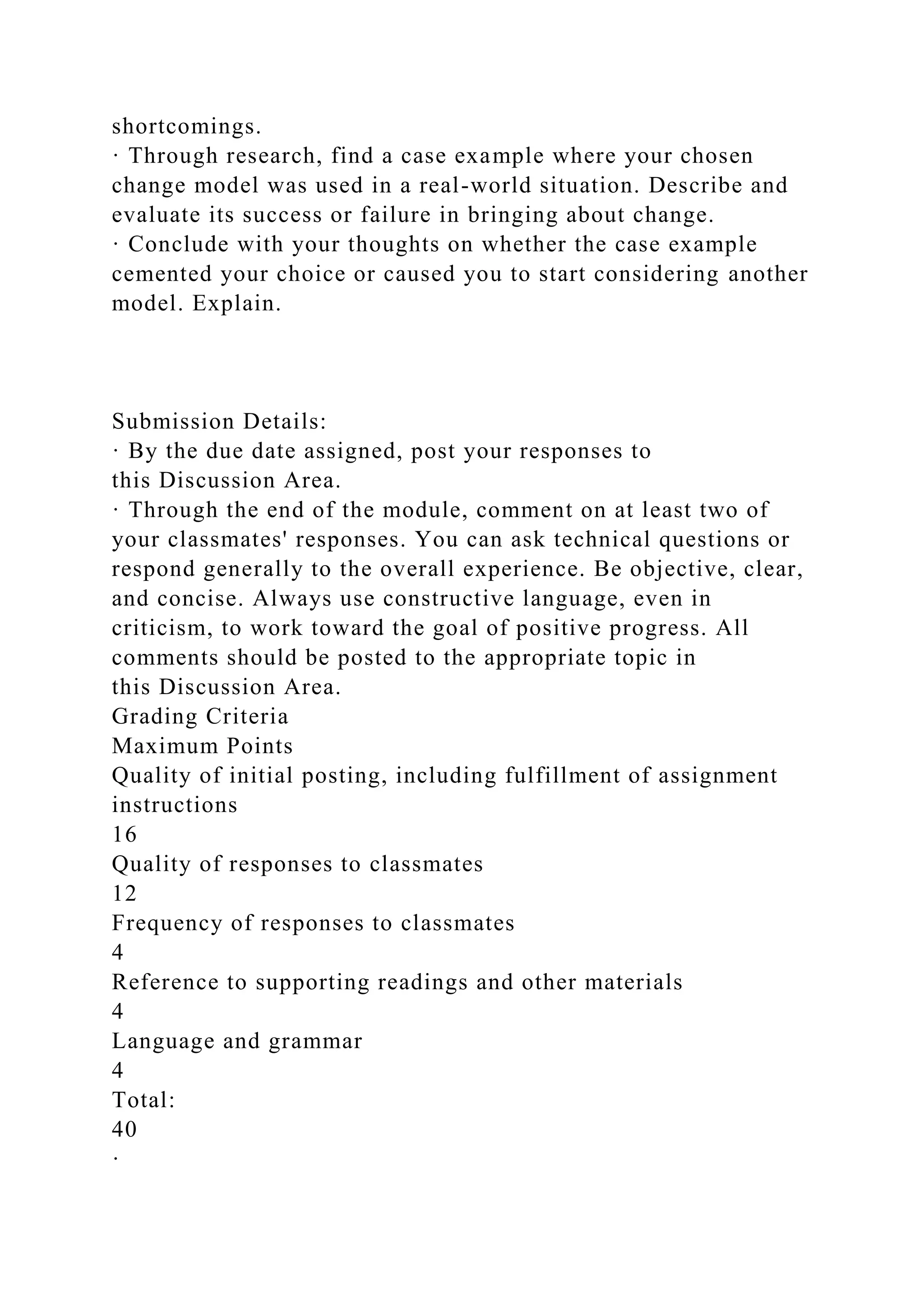The document discusses various models for planning and implementing organizational change, highlighting both conceptual and process approaches. It emphasizes the importance of communication, contextual issues, and measuring outcomes, while detailing major change models such as Lewin's three-step theory and Kotter's eight-step model. Additionally, it outlines the challenges and drivers of change, suggesting that understanding these factors is crucial for successful implementation and adaptation.
